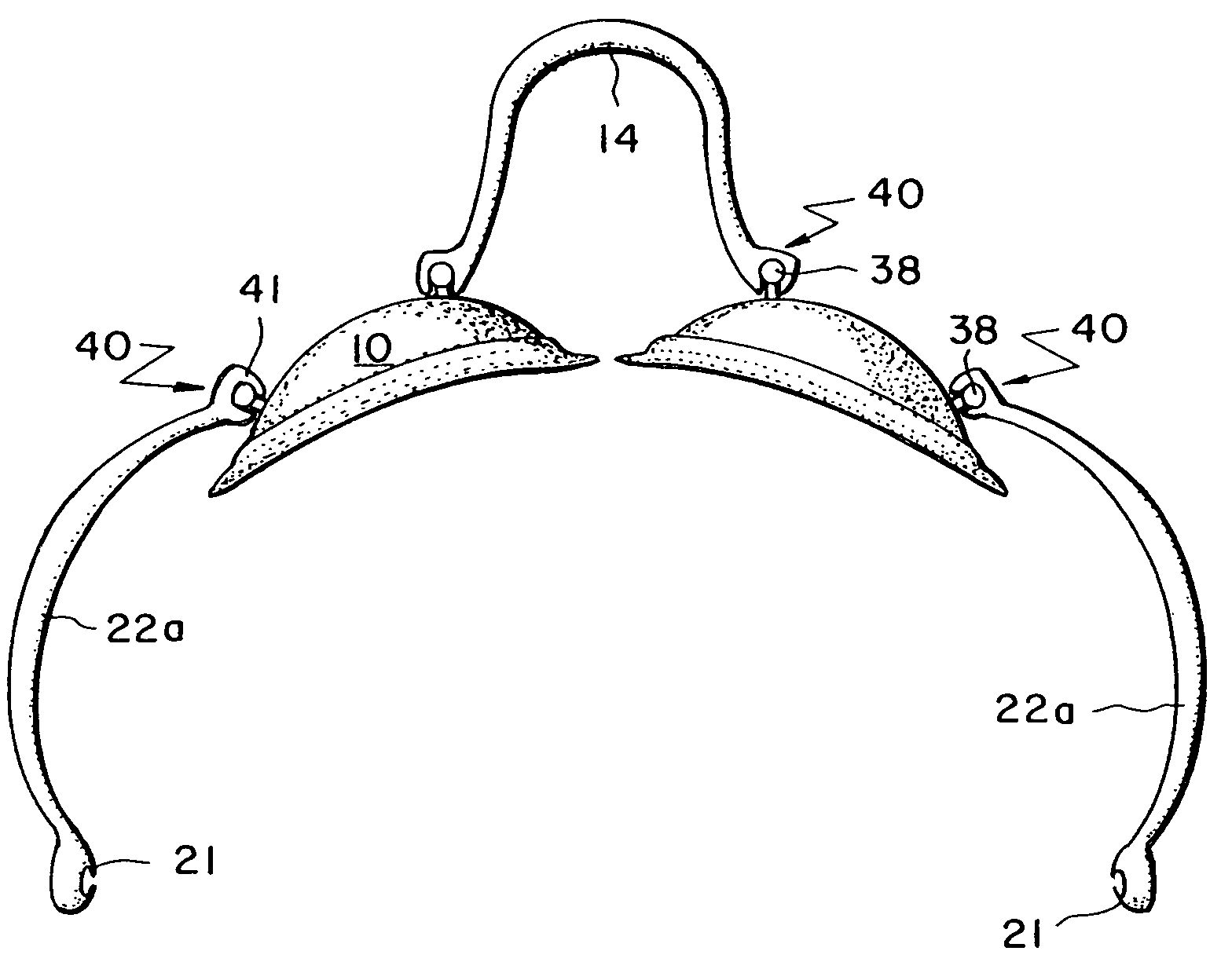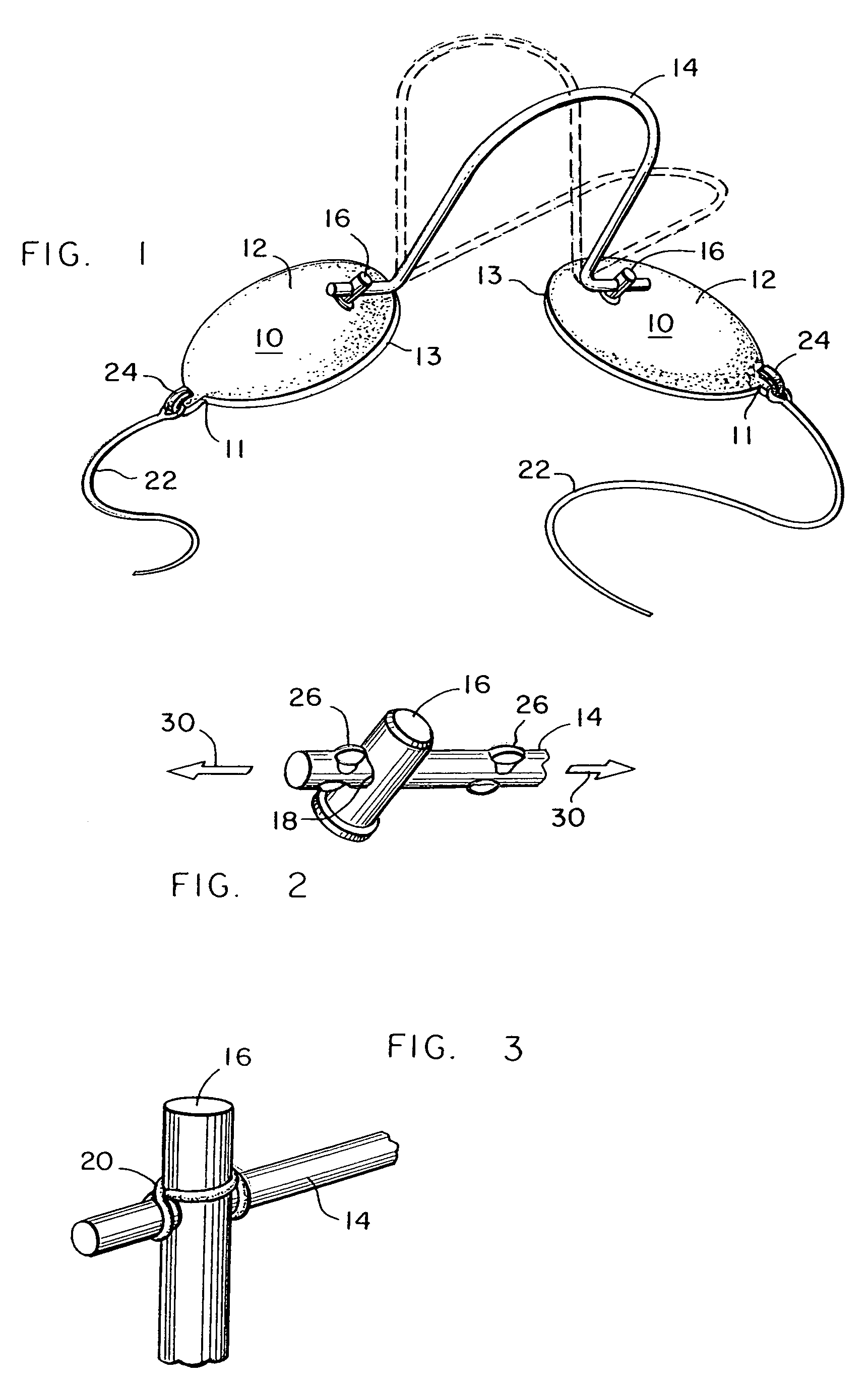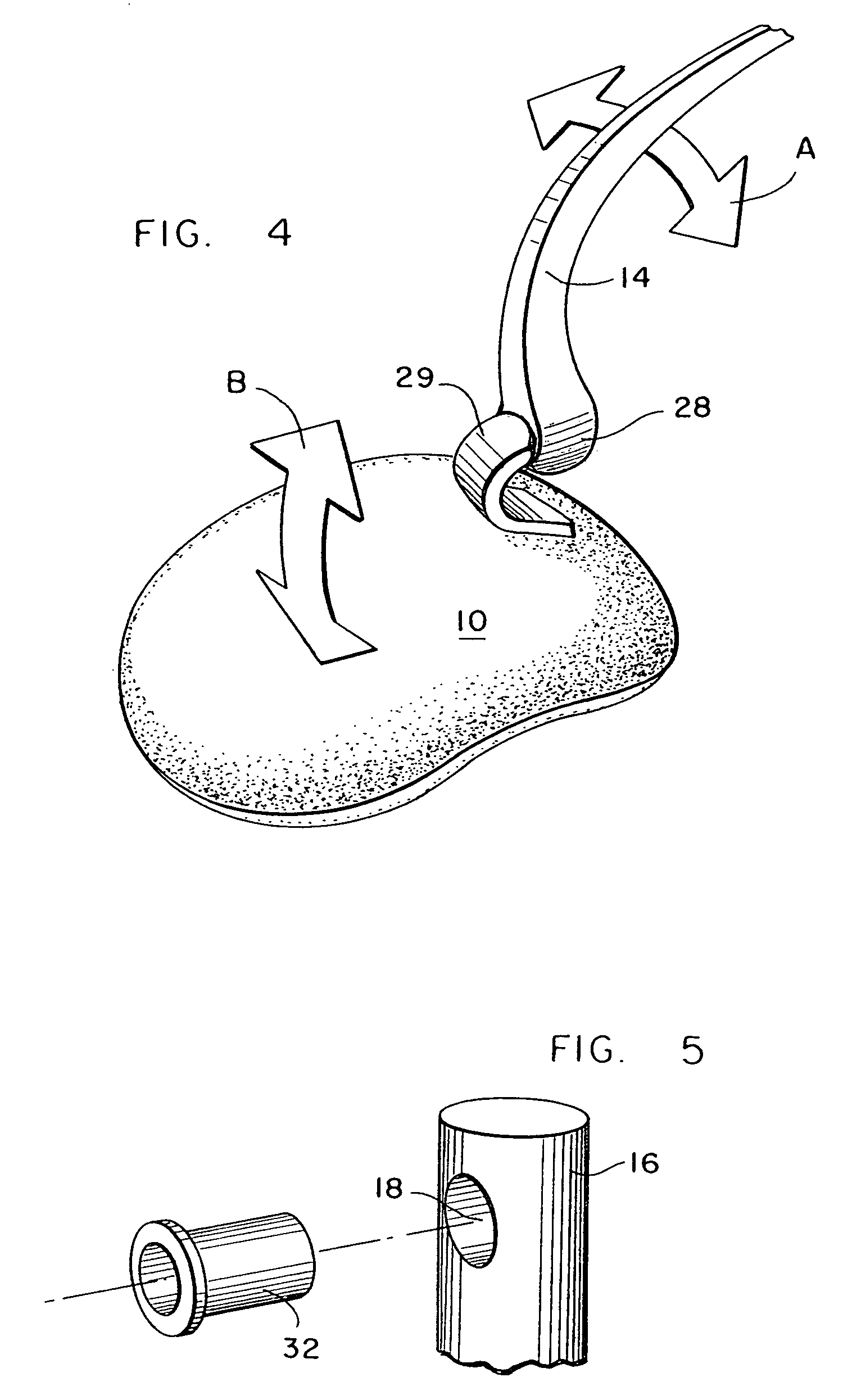Ocular surgical protective shield
- Summary
- Abstract
- Description
- Claims
- Application Information
AI Technical Summary
Benefits of technology
Problems solved by technology
Method used
Image
Examples
Embodiment Construction
[0030]FIG. 1 shows how the external ocular shield device is comprised of two shields 10 connected by a nose piece 14. The shields 10 and nose piece 14 can be made of metal, plastic, or a combination of metal and plastic, depending on which procedure is being preformed and which type of energy is being used. Each shield 10 is sized and shaped so that it will cover the entire eye. Each shield 10 comprises an outer temporal area 11 and an inner nasal area 13, and can further comprise an elastomeric lip 46 (shown in FIG. 18) that can be molded onto the shields 10 so as to provide a comfortable and precise fit around the patient's eyes. The elastomeric lip 46 further serves to keep any heat energy that may build up on the shield 10 from contacting the patient's skin. The shields 10 are approximately 1 mm 4 mm thick and are constructed of a material that does not allow medical treatment radiation energy to pass through. In one embodiment the shields are constructed of a metal such as stai...
PUM
 Login to View More
Login to View More Abstract
Description
Claims
Application Information
 Login to View More
Login to View More - R&D
- Intellectual Property
- Life Sciences
- Materials
- Tech Scout
- Unparalleled Data Quality
- Higher Quality Content
- 60% Fewer Hallucinations
Browse by: Latest US Patents, China's latest patents, Technical Efficacy Thesaurus, Application Domain, Technology Topic, Popular Technical Reports.
© 2025 PatSnap. All rights reserved.Legal|Privacy policy|Modern Slavery Act Transparency Statement|Sitemap|About US| Contact US: help@patsnap.com



